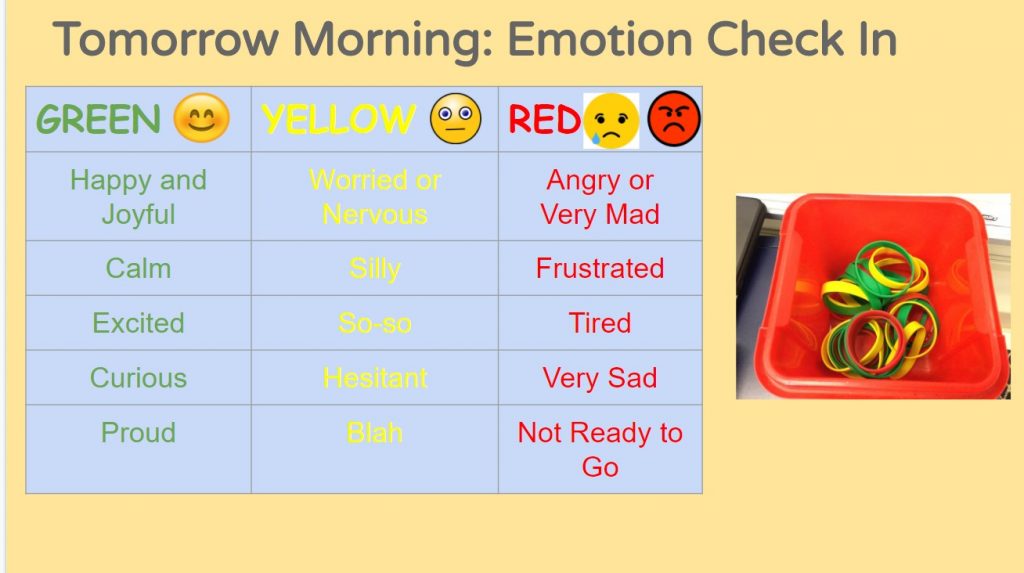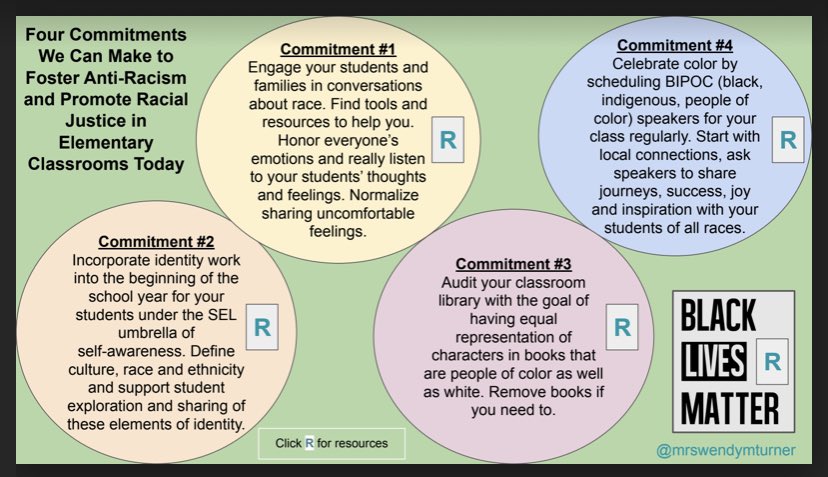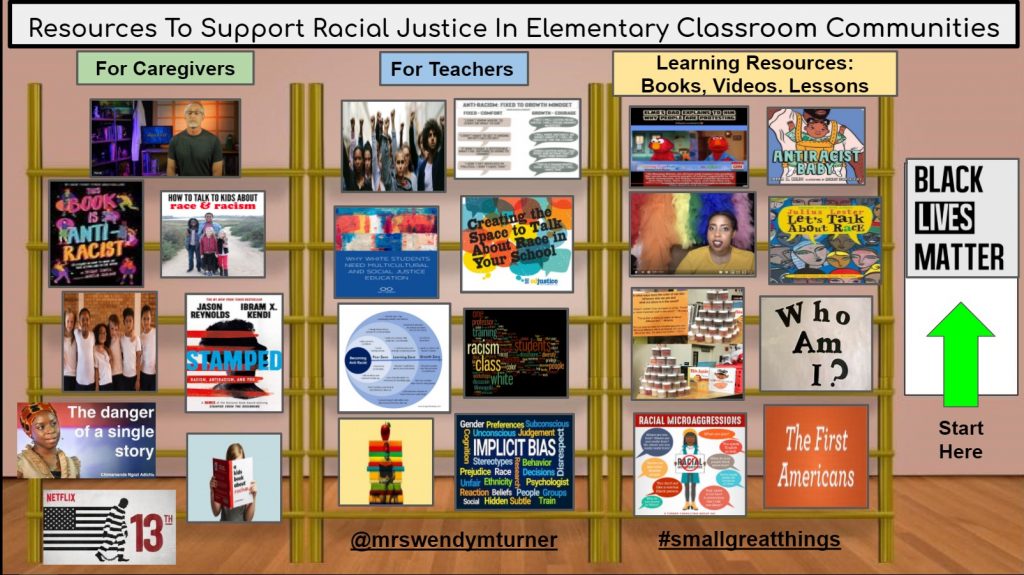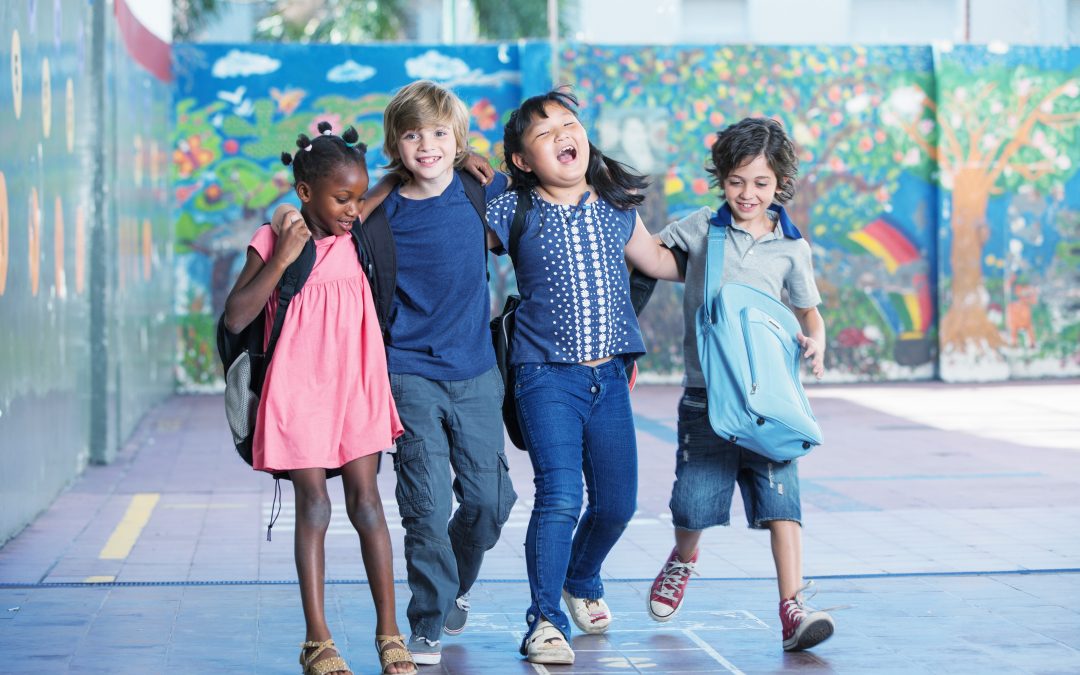By. Wendy Turner, M.Ed.
What does it mean to be healthy at school? There’s the physical space to consider – ensuring school buildings are clean, safe, and conducive to learning and teaching – as well as occupant health and well-being. However, in the context of a global pandemic and a racial justice reckoning, it’s critical that we deeply examine the word “healthy” to unpack the individual building blocks of a healthy school environment.
At its core, a healthy school should be physically and emotionally safe for students, families, and the adults who work there. And being healthy has never been more important as we return to in-person learning in the midst of COVID-19. Public health departments, state departments of education, and local school districts have worked tirelessly to develop safety protocols and procedures for physical spaces. As a result, schools may be some of the cleanest places one may encounter these days. But what about emotional safety in the context of health? How can we create learning spaces that foster emotional safety as we navigate two ongoing crises: COVID-19 and racism?
Assessing Student Emotional Health Via Remote Learning
Students have experienced a roller coaster of emotions since schools closed in March. Key to being in tune with these emotions is creating a system that supports students in sharing their emotions, even difficult ones. This EdSurge article from Spring 2020 explains the criticality of creating a system of check-ins with students and noticing patterns around what is shared so educators can act when students stop checking in or start sharing more difficulty. A key component of this system involves establishing a classroom or schoolwide routine that everyone participates in.

I teach second-grade remotely and through my daily check-in system I observed one of my students go from feeling “green” every day (ready to go, feeling good) to “yellow” (a bit worried, nervous, or sad). After following up with this student and talking with a parent, we realized the excitement of the new school year had worn off and the student was stressed about academic work as well as finding quiet space in a home with lots of siblings and lots of drain on the family Wi-Fi network. At the same time, we realized this student is incredibly savvy at problem-solving and with technology, so I worked to create some space during school for her to showcase and share some technology skills to build her confidence. Facilitated virtual lunches with friends also helped to create some joy and fun. This student is now calm, focused, and regularly participates in class; without this check-in system, I never would’ve been aware of this subtle, but important change in her emotional state. As a team, we were able to support this student before things got worse.
The 3Rs of Social-Emotional Learning Right Now
As I reflect on school reopening this fall, I realize that three “Rs” have been critically important. First, helping students and families reconnect is paramount! In my class, students are reconnecting beautifully by engaging in daily morning meetings with joyful and meaningful connection topics such as “What’s the news?”, “What’s important to you?”, “What do you want people to know?”, or simply “What’s something you enjoy doing during your free time?” I foster connection with my families by holding weekly Zoom check-in sessions, frequently messaging on Class Dojo, and sending a weekly newsletter via Adobe Spark so families feel connected to the classroom and our activities. You can see a sample newsletter here.
Another key “R” is recovery. Students have had to recover from the trauma of school closing suddenly in the spring, the impact of COVID-19 on their daily lives, and the trauma of seeing the challenge of racial justice unfold in front of their eyes. A key component to recovery is creating a safe space to express emotions and share discourse on difficult topics such as race and the pandemic. I’ve found that when we create this safe space, students move into it freely and share amazing insights. When watching this video on Appreciating Diversity from Lessons For SEL, one of my students said the reflection questions would be good ones “for a racist.” Because we had conversations earlier in the year to define race, racial categories, racism, and what a racist is, she was able to articulate this safely and authentically in our classroom space.
Finally, we have been reimaging our learning experience. We’re utilizing breakout rooms for connection conversations and academic learning. We’re learning to handle technology problems with resilience while getting up-to-speed with new platforms such as Nearpod, Flipgrid, and Google Jamboard. Through it all, my students have been active players, providing feedback on what’s working and what would work better. The reimagination process has been such an incredible growth opportunity for them and for me!
Teacher Emotional Health Matters Too
Teachers work tirelessly to do the best they can for their students. Many are stepping up in extraordinary ways to meet their students’ needs during this trying time. Unfortunately, the stress, uncertainty, and challenges facing schools this year are taking a toll on teacher emotional health. As someone who has been teaching for over 10 years, I can tell you that learning to do your job in a completely new way in the midst of a global pandemic is incredibly overwhelming. I shared with a friend recently that I hadn’t felt this lost and unsure of myself since I became a new mother 15 years ago.
Teacher self-care is often pointed to as the panacea for this stress. At the same time, this well-meaning advice becomes “one more thing” for teachers to figure out on their own, during their personal time. To realize emotionally healthy spaces, teacher self-care must be integrated into the systems and culture of schools and school districts. To start, school administrators can create space during staff and team meetings for sharing emotions in an honest and healthy way. We can “Name it to Tame it” in much the same way we do with students to encourage social-emotional competence. It’s also critical to note and normalize the sharing of uncomfortable emotions with staff peers and students. Teachers who are criticized for being negative when they’re actually being honest is a sign of an unhealthy school culture. You can read about some of my personal experiences here. Investing in strategies to proactively avoid compassion fatigue and secondhand stress is also critical. I recently shared ideas and practices to help educators avoid secondary trauma and stay emotionally healthy with the National Education Association (NEA). Strategies such as reframing negative thoughts, staying connected to others, and scheduling self-care are critical for resilience. You can learn more here.
Emotional Health, Trauma, and Confronting Racism
Adding to the complexity of educating students during a global health crisis is the need to address racial justice in classrooms around the country. Students who’ve been marginalized by oppressive discipline systems, the absence of inclusive curriculum and experiences, and a lack of cultural competence among teachers are not emotionally healthy. Racism causes trauma and countless students bring the negative effects of systemic racism into their classrooms – spaces where systemic racism is alive and well, too. Talking about race and racism is an absolute must if we’re to create school environments that are safe and inclusive for all students and staff. Students must be able to share their own stories and experiences in a safe and non-judgmental space. Our youngest learners need to know and understand what race and racism are and how to embrace each other by appreciating each other’s humanity and diverse perspectives. To get started, take a look at Dena Simmons’ six strategies for becoming an anti-racist teacher. NEA’s Ed Justice initiative also offers valuable strategies and pitfalls to avoid when pursuing racial justice in schools.
As an elementary school teacher, I know these problems won’t be addressed overnight as countless elements of systems must be examined and modified. To support racial justice here and now, I created a set of four commitments to adhere to in my classroom this year. These commitments are outlined in the picture below. I also pulled together resources for teachers, caregivers, and lesson planning in elementary classrooms to foster racial justice, also shown below.


The common thread in this work to support healthy, safe, and equitable schools for all students is self. Dr. Byron McClure, a school psychologist in Washington, D.C. and creator of Lessons For SEL, created these social-emotional racial equity cards to foster self-awareness, discourse, and growth for educators, parents, and adults interested in pursuing and fostering racial justice to keep schools emotionally healthy for all students and adults.
There’s always more to do. There’s always another way to look at and dissect the word “healthy.” I hope you find these resources and strategies for success helpful in your teaching practice. You can find more of my work here.
Author Bio
Wendy Turner teaches second-grade at Mt. Pleasant Elementary School in Wilmington, Delaware. She is passionate about connecting learning in the classroom to the real world. Deeply committed to social-emotional learning, she guides her students to embody respect, empathy, resilience, citizenship, and a growth mindset through dynamic classroom experiences. In 2017, Wendy was named the Delaware Teacher of the Year. Additional awards and leadership include being named a Compassion Champion by the Governor’s office, a NEA Foundation Global Learning Fellow, and a Presidential Awardee for Excellence in Teaching Science. Wendy is a regular contributor to education blogs and honest conversations about education on Twitter. Connect with her: @mrswendymturner

